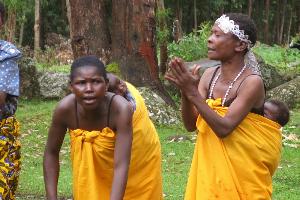“Polar bear” someone yelled. I whipped my head towards the window of the rickety school bus where I was sitting with thirty other adventurers on a tour of Churchill, Manitoba.
This was the starting point of my eight-day Cruise North expedition to the Canadian Arctic. In a few hours, we'd board our ship Lyubov Orlova, a Russian icebreaker, and set sail our Arctic Odyssey across the Hudson Bay, down the Hudson Strait, and finally to Kuujjuaq.
Whales and Walrus and Polar Bears, Oh my!
I‘d signed on partly because the cruise promised icebergs, beluga whales, musk ox, walrus and polar bears, and partly because Cruise North is an Inuit-owned tour operator with Inuit staff onboard, and we’d be stopping at Inuit villages along the way; but mainly because midway through the voyage, there'd be a 26.2-mile marathon to be held on top of a 3,000-foot-high fjord.
Now, as I stared at the 300-pound polar bear foraging in the tundra less than 50 yards away, I hoped I wouldn’t have a personal encounter with one on that fjord.
Inutkshut



